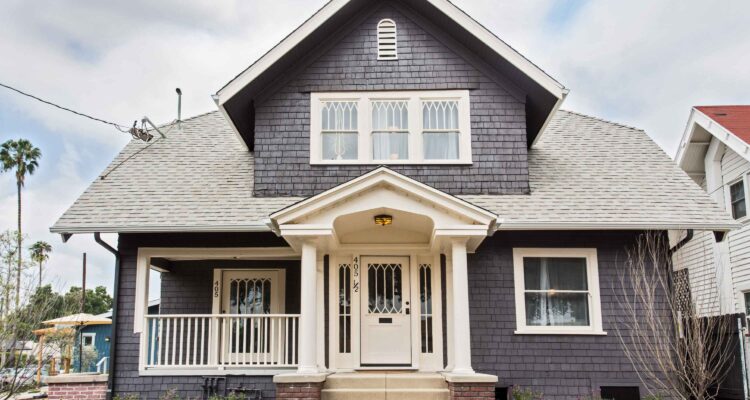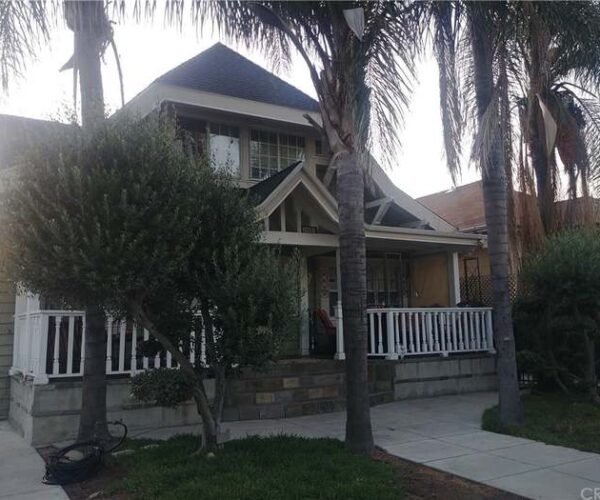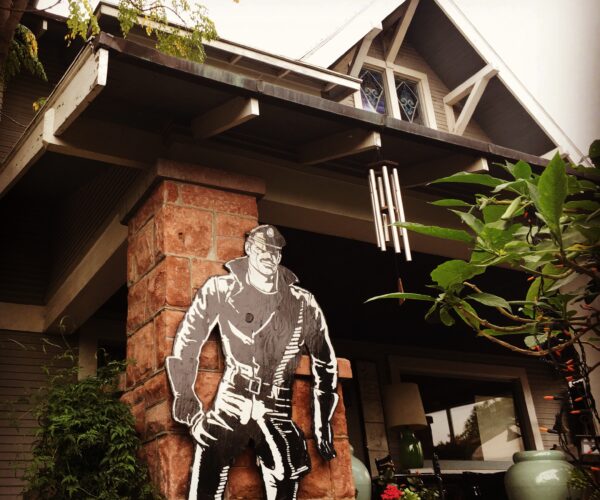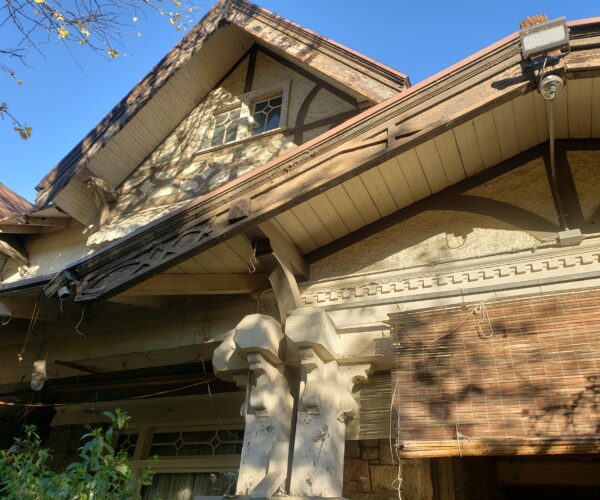
Place
A.V. Walberg Residence & Adjoining Properties
This visionary project serves as a creative example of how we can balance the need for adding density to L.A.’s neighborhoods while still respecting a neighborhood’s historic character.


Place Details
Address
Get directions
Architect
Year
Property Type
Community
As Los Angeles faces an ongoing housing crisis, one thing is clear: we need more housing. And we need it everywhere, in neighborhoods across the region.
But how do we add housing to a historic neighborhood while also respecting its character? In the Highland Park-Garvanza Historic Preservation Overlay Zone (HPOZ)—known for its Craftsman, Victorian, and Mission Revival-style homes—a recent project accomplished this feat by rehabilitating two historic homes and added much-needed new housing.
At the intersection of Avenue 66 and Crescent Street in Highland Park’s Garvanza district, a pair of historic homes sat vacant for years. The property owner kept them empty with the intention of demolishing the historic homes and building a small lot subdivision on these properties and on an adjoining vacant lot.
The owner submitted plans to demolish the homes and construct the new project in 2006, but neighborhood residents protested the potential loss of these historic resources. The Garvanza Improvement Association helped lead the years-long preservation effort to save these houses from demolition, and their vigilance paid off: the homes found protection when the Garvanza district joined the Highland Park HPOZ in 2010.
As contributing structures in the HPOZ, the homes were offered protection from demolition; however, the owner remained uninterested in preserving the homes.
Thankfully, the Garvanza Improvement Association helped find a preservation-minded buyer for the properties. After purchasing them in 2016, the new owner hired a local preservation architect to develop a project that would add more housing to the property while also meeting the Secretary of the Interior’s Standards for the Treatment of Historic Properties. The project employed a mixed approach of rehabilitating the historic homes, adaptively reusing a garage, and constructing new infill.
Constructed in 1916, the Transitional Shingle-style home known as the A.V. Walberg Residence stood empty and blighted for years. While stripping away the home’s inappropriate additions, the project team discovered one original window. Using the original window as a template, they replicated it for the home’s façade. In addition to bringing this single-family home back to life, the project team added a new studio apartment within the existing structure.
The adjoining lot at 6517 Crescent Street houses a 1921 Craftsman bungalow. As with the A.V. Walberg residence, the project team painstakingly repaired and reused existing historic materials. In some cases, they flipped shingles over instead of replacing them, preserving the character-defining shingle style of the two homes. The team added density to the site by adapting the home’s original two-car garage into a new studio apartment.
In addition to rehabilitating the two historic homes, the team constructed a new two-story single-family home on the adjacent lot, which had long sat empty except for a large native oak tree. Largely inspired by the design of a Victorian farmhouse, the new construction, while contemporary, fits in with the surrounding historic neighborhood in both its size and style.
In the backyard, the team built a new Accessory Dwelling Unit (ADU), popularly known as a granny flat. The team took great care to leave the oak tree in place, and it now provides cooling shade to the yard and granny flat.
Ultimately, the new owner successfully turned two single-family homes across three parcels of land into six different residences. The mix of housing unit sizes allows for flexibility: studio apartments can either be rented out to individuals, or used by multiple generations of a single family.
This visionary approach serves as a model for historic neighborhoods across Los Angeles, and proves that density and preservation can and should coexist.
Congratulations to the owner, residents, and the entire project team for earning a 2019 Conservancy Preservation Award!


